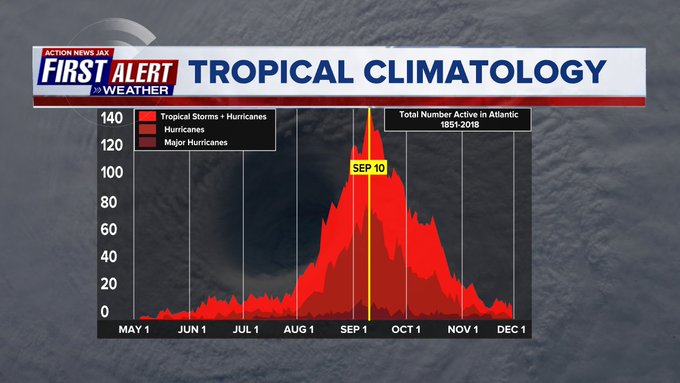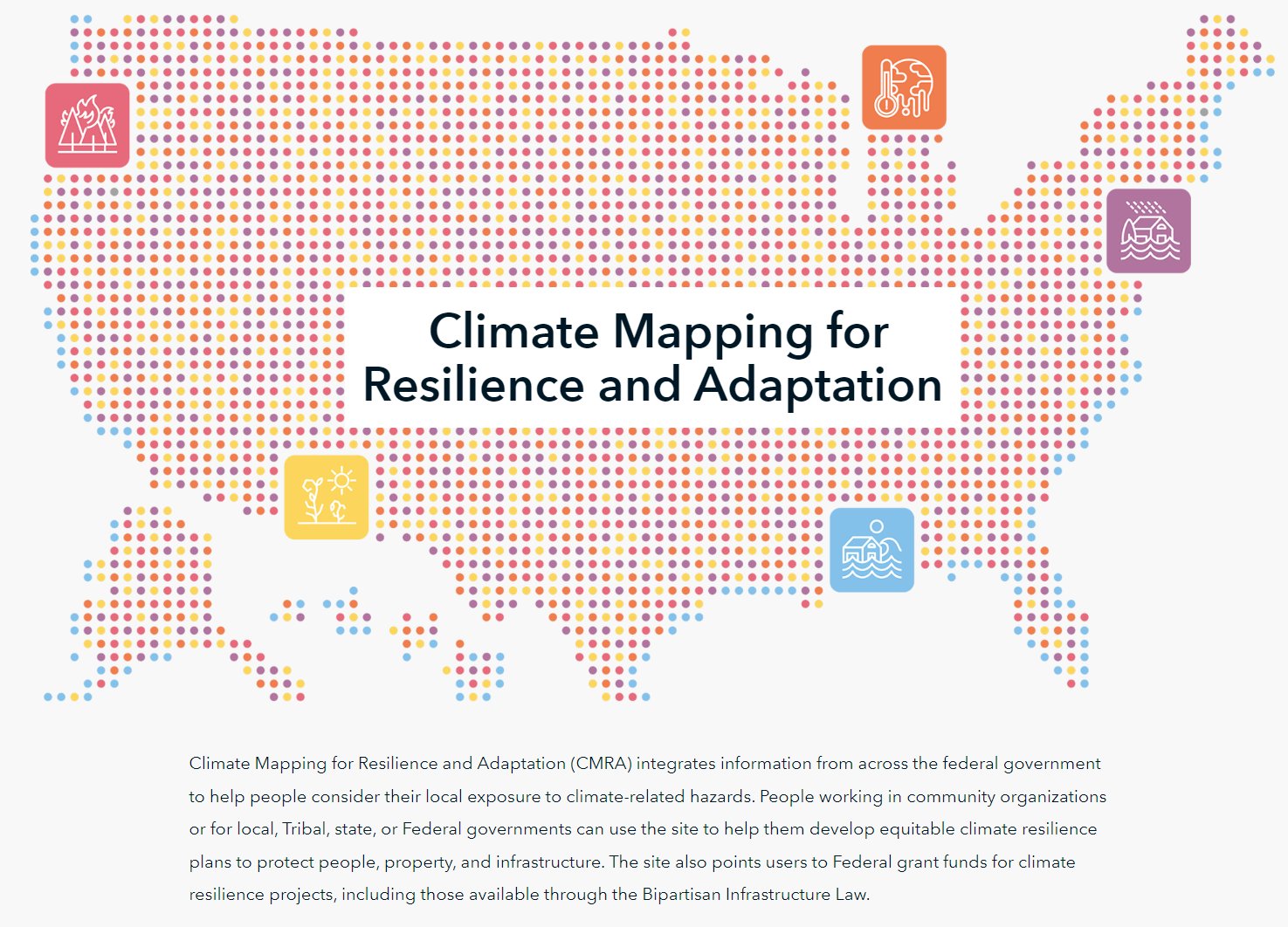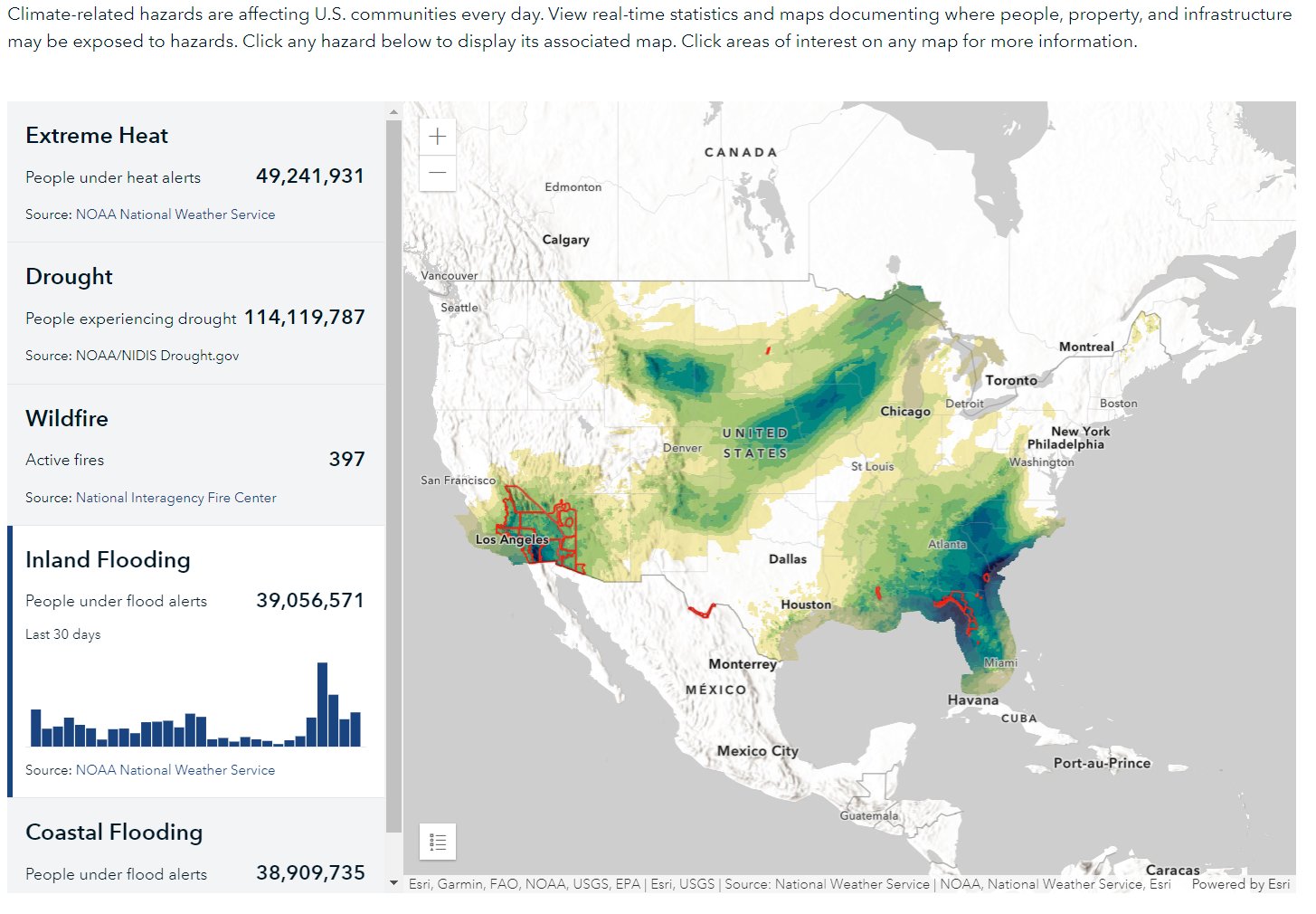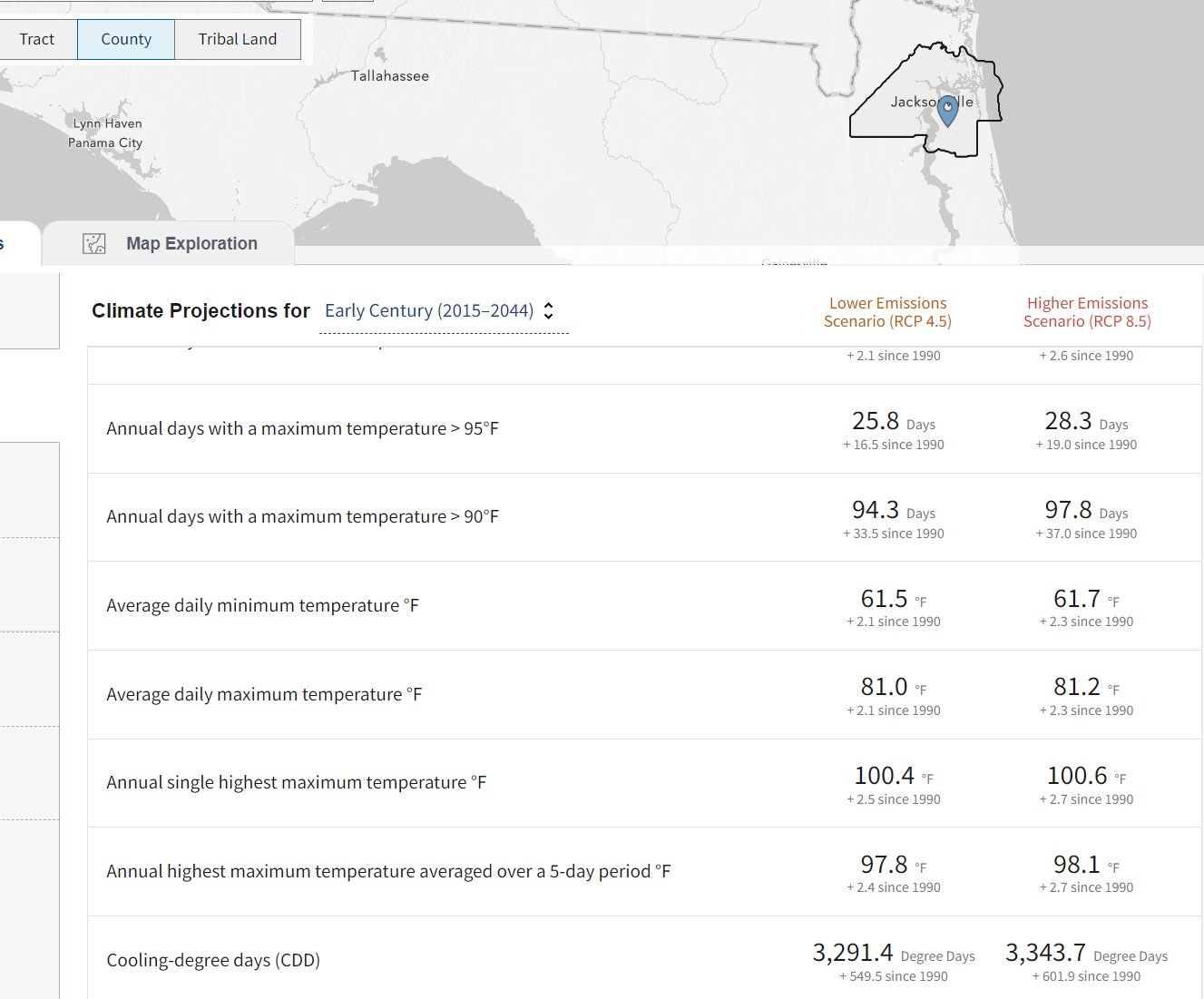Jacksonville, FL — It’s the peak of the hurricane season. “Talking the Tropics With Mike” is updated everyday through Nov. 30th.
Our U.S. gov’t has launched an online climate portal - click * here *. You can input your zip code to get a variety of weather - some is real time - & climate info. There is an attempt at future climate conditions based on a “lower vs. higher” emissions scenario which may or may not be accurate. I’d like to see another column added showing the 30-year avg. In any case, it’s an interesting site. According to the White House fact sheet:
The Climate Mapping for Resilience and Adaptation portal is a first-of-its kind hub that will help communities, federal agencies, and other levels of government better understand current exposure to climate risks to strengthen their resilience plans. The portal, which will continue to evolve to meet community needs, includes:
- Real-time monitoring dashboard: To help track the climate-related hazards that are affecting communities each day, a new dashboard brings together maps showing areas currently under extreme heat advisories, drought conditions, and inland and coastal flooding warnings, as well as the locations of active wildfires and areas of poor air quality they produce.
- Assessments of local climate exposure: In addition to real-time data about extreme weather events, the portal also helps communities understand their historic and future exposure to various climate impacts. The portal’s Assessment Tool provides hazard reports on heat, drought, and flooding down to the census tract level, including projections of future impacts in both low and high-emissions scenarios, based on climate models used in the U.S. National Climate Assessment. This interactive application will help local resilience planners and other users understand how future temperature, precipitation, and flooding conditions may impact their community in the near-term and by mid- and late-century.
- Funding opportunities and other federal resources: The portal also centralizes federal data, programs, and funding opportunities that are available to support resilience efforts—including resources for extreme heat, drought, wildfire, flooding, and coastal inundation and sea level rise. The CMRA Assessment Tool will also help state, local, Tribal, and territorial governments develop data-driven proposals to access federal funding.
The night skies through Sept. into early Oct. from Sky & Telescope:
Sep. 9 (evening): The almost-full Moon hangs nearly midway between Saturn and Jupiter.
Sep. 10 (evening): The Moon sits to Jupiter’s right in the southeast.
Sep. 15 (evening): The Moon rises in the east-northeast, preceded by the Pleiades and trailed by Mars. The threesome form a pretty picture as they rise higher in the sky.
Sep. 16 (evening): The Moon, Mars, Aldebaran, and the tip of the Bull’s western horn (known as Elnath) form an eye-catching line above the east-northeastern horizon.
Sep. 20 (dawn): The waning crescent Moon is high in the east in in Gemini, less than 3° below Pollux.
Sep. 21 (dawn): The Moon visits Cancer and sits a bit more than 3° upper left of the Beehive Cluster (M44).
Sep. 22: Autumn begins in the Northern Hemisphere at the equinox, 9:04 p.m. EDT.
Sep. 23 (dawn): The thin lunar crescent and Regulus rise 4½° apart in the east-northeast before sunup.
Sep. 26 (all night): Jupiter arrives at opposition. The gas giant is also its closest to Earth this century, at a distance of about 591 million kilometers (367 million miles).
Sep. 30 (dusk): The Moon is 1½° above Antares in Scorpius. Follow them as they sink toward the southwestern horizon.
Oct. 5 (evening): High in the south, the waxing gibbous Moon sits a little more than 6° to the lower left of Saturn.
Oct. 8 (evening): The Moon is positioned roughly 4° lower right of Jupiter.
Moon Phases
First Quarter Sep. 3 2:08 p.m. EDT
Full Moon Sep. 10 5:59 a.m. EDT (Harvest Moon)
Last Quarter Sep. 17 5:52 p.m. EDT
New Moon Sep. 25 5:55 p.m. EDT
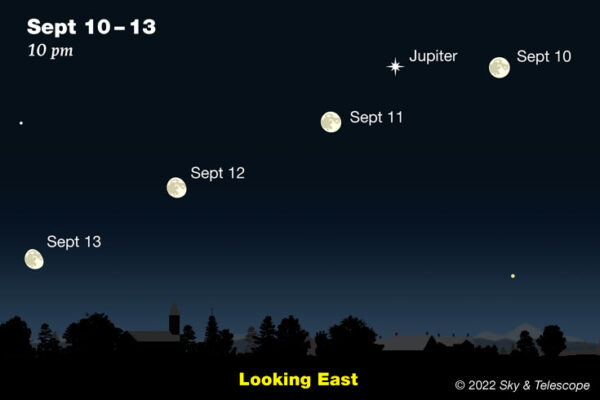
©2022 Cox Media Group

